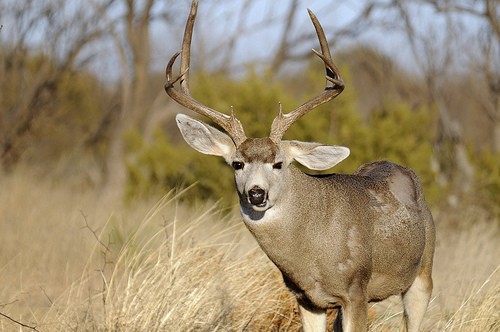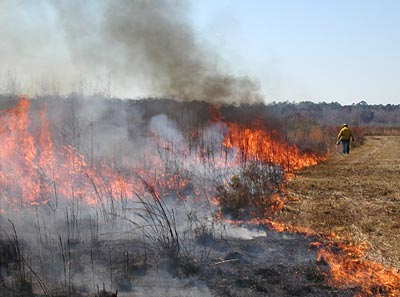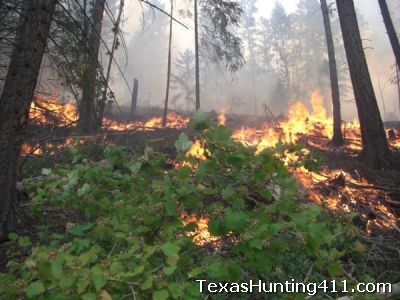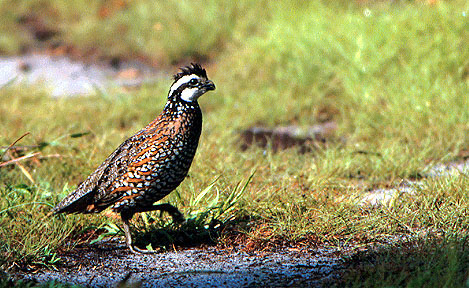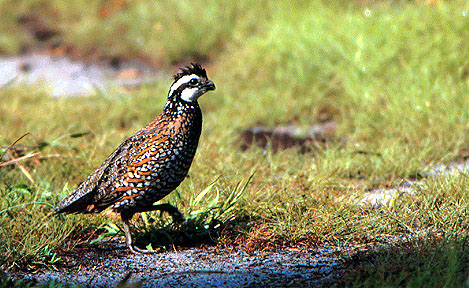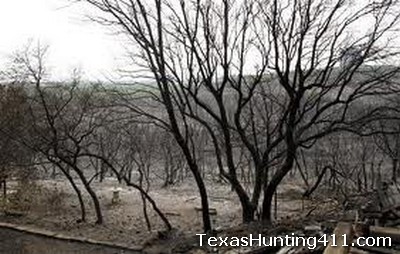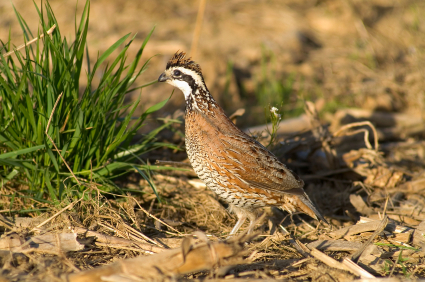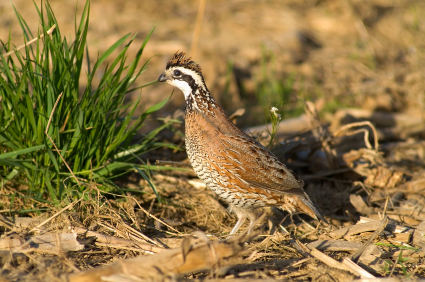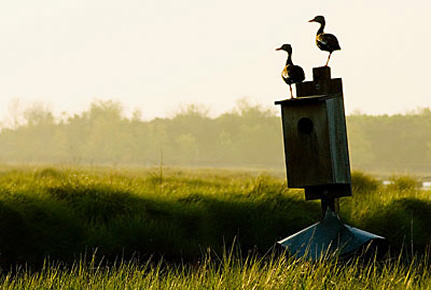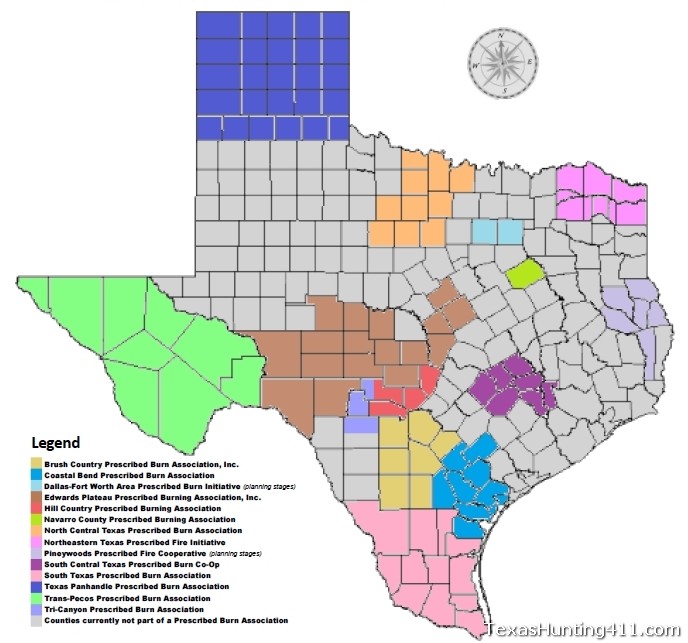Habitat restoration and enhancement is the key to maintaining healthy plant and animal populations on a property. Active habitat management of native plant communities for the good of wildlife is what this year’s Lone Star Land Steward Awards have implemented on their properties across the state. Texas Parks and Wildlife Department (TPWD) and the Sand County Foundation are highlighting the following land stewards, in addition to others, who have taken outstanding efforts to manage their property for wildlife.
Texas is known for it’s great hunting, but more important than that is the great habitat that makes it all possible. Properties managed by Lone Star Land Stewards award winners often have both. It’s not a coincidence. The winners this year should be commended for their commitment to improve habitat for wildlife and the greater good of their community.
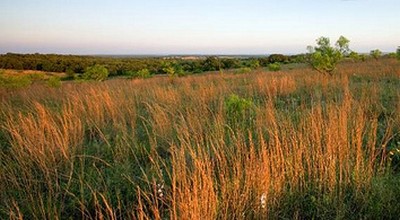
Blackland Prairie – Warbler Woods Bird Sanctuary, Guadalupe County;
Warbler Woods covers 124 acres of diverse Blackland Prairie habitat. For more than 15 years, owners/operators Susan and Don Schaezler have managed the property to provide maximum diversity of native plants and wildlife. Among their achievements include native grassland restoration, juniper control, and construction of ponds and other water features. The owners began inviting birders to the property in 1997. Interest by birders grew and today the family hosts 2,000 visitors a year who enjoy an incredible diversity of birds. Known throughout the nation, Warbler Woods became a charitable foundation in 2008. Now an oasis in the midst of development, the owners especially enjoy introducing children to nature and involving students and families in volunteer projects such as resource monitoring, habitat enhancement and bird banding.
Cross Timbers and Prairies – Lodge Creek Ranch, Jack County
Since 2003, Bryan Mitchell and his family have worked to improve the habitat diversity on their Lodge Creek Ranch primarily to benefit white-tailed deer. Prescribed burning and brush management has been used to improve plant quality and diversity, resulting not only in improved antler quality, but also helping expand turkey populations. Both winter and summer food plots provide supplemental nutrition to a variety of wildlife. Control of feral hogs is an ongoing challenge. Management includes watershed enhancement of the West Fork of the Trinity River, which runs through a portion of the ranch. Based on harvest recommendations, antlerless deer are taken by youth hunters participating in the Texas Youth Hunting Program. Active in the Cross Timbers Chapter of the National Wild Turkey Federation, the ranch also helps raise money for charities such as the Union Gospel Mission by donating hunts each year.
Edwards Plateau – Blue Mountain Peak Ranch, Mason County
In 2001, with goals of increasing plant and animal diversity and putting more water in the ground for range health and groundwater recharge, Richard Taylor began restoring land heavily dominated by juniper to create a diverse landscape of oak savannah uplands with wooded slopes and drainages. Brush management, grazing deferment and prescribed burning have been used to restore range health, reduce erosion and rejuvenate dozens of springs that now run year round. The Taylors began a deer management program with assistance from TPWD in 2002 and became MLDP cooperators in 2004. The ranch offers commercial hunting along with guided hikes, photography, birding and mountain biking. They host the Texas Youth Hunting Program each year and invite students, landowners and natural resource professionals to use the ranch for educational programs.
Gulf Coast Prairies and Marshes – A Country Life Ranch,
Austin/Colorado Counties
Using the land as an active educational tool to break down barriers between traditional ag producers and new suburban landowners, the Cary Dietzmann family’s vision is to improve plant and animal diversity while also enhancing recreational enjoyment. Practices such as rotational grazing, invasive species control, prescribed burning, strip disking, and wetland/riparian zone enhancement are used to accomplish these goals. Deer are managed cooperatively with neighboring landowners and bird diversity is enhanced using supplemental nest structures and water features. In an effort to reach out to neighbors, the ranch regularly conducts “Habitours” to show both traditional and new landowners management options and innovative practices that have worked well.
Pineywoods – Clear Creek Ranch, Sabine County
With assistance from TPWD Landowner Incentive Program and NRCS EQIP program, Mike Howard has restored on his Clear Creek Ranch more than 800 acres of the longleaf pine/native bunchgrass ecosystem that historically dominated much of East Texas. Prescribed fire is used to control yaupon and create an open longleaf pine forest that provides habitat for a diversity of wildlife. Because of their restoration efforts, the ranch is one of the few places in the Pineywoods where you can hear bobwhite quail whistle and see Bachman’s sparrow, a state-listed species of concern attracted to pine savannahs with grassy understory. These grasses provide nesting habitat and stabilize the highly erosive soils, reducing sedimentation into creeks. The ranch has hosted numerous youth groups, landowners, and resource professionals interested in learning about longleaf pine restoration.
Post Oak Savannah – Trinity Bluff Wildlife Ranch, Navarro County
Since 2002, the Brian Smith family has worked to transform overgrazed uplands, post oak woodlands and bottomlands into diverse habitats of native bunchgrasses, forbs and desirable woody plants. Livestock deferment, prescribed burning and native grass seeding has been used to improve plant diversity. Working with the East Texas Wetlands Project and Ducks Unlimited, the Smith’s constructed a 20 acre wetland in the Trinity River bottom that attracts a diversity of waterfowl, wading birds and shorebirds. A smaller wetland was constructed along a shallow draw in the uplands. White-tailed deer quality has improved as a result of population control and enhanced plant diversity. Leaders in the Trinity Basin Conservation Foundation, the ranch is active in Trinity LANDS educational program for 4th graders from Navarro and Dallas counties.
Rolling Plains – Hailey Ranch, Jones and Shackelford Counties
Described as “the hardest working man in wildlife management”, Rob Hailey is considered in his own humble way an evangelist for natural resource conservation, hunting ethics, and land stewardship in the Rolling Plains. A student of plants, Rob can tell you the names, values, soil preferences, and how to manage the hundreds of native plants on the ranch. As a testament to his management, you can walk a short distance nearly anywhere on the ranch and see a hundred different plant species. Over the past 15 years, the ranch has used innovative and proven management practices, such as disking, livestock deferment, prescribed burning, food plots, and wildlife friendly water troughs to enhance wildlife habitat. Management approaches are always ecologically sound, relying on principles of plant succession. The ranch hosts numerous field days and an annual youth hunting event for over 50 kids and parents.
South Texas Plains – Halff Brothers Ranch, Frio County
For the past 109 years, the Halff family has ranched through good times and bad. Continuous learning through the decades is the hallmark of achieving their goal of passing on a self-sustaining ranch to future generations. Jim Halff and his family use prescribed burning and aerial herbicide to manage brush and enhance native grasses, resulting in a robust turkey population. Wildlife-friendly water features benefit a diversity of wildlife. The ranch is currently enrolled in the NRCS bobwhite quail EQIP priority area to maintain and enhance nesting cover. Quality deer management is also a goal as they work with TPWD through the MLDP program. Income from farming, lease hunting, stocker cattle, and birding support management goals. Riparian area protection is a high priority as the ranch works to educate neighboring landowners by hosting Nueces River Authority riparian workshops.
Trans Pecos – O2 Ranch, Brewster and Presidio Counties
Owned by the Lykes Brothers since 1941, this 275,000 acre ranch began major restoration efforts in 1998 with ranch wide deferment from grazing. Over the years, Charles P. Lykes Jr. and ranch operator Homer Mills have partnered with Sul Ross State University, NRCS, TPWD and USFWS to protect, restore and monitor riparian areas and associated uplands. Treatment of 4,000 acres of shrub encroached land provides crucial habitat for grassland species such as prairie dogs, pronghorn, and burrowing owls. With assistance from TPWD’s Landowner Incentive Program, restoration efforts in the Terlingua Creek watershed have decreased invasive shrubs and bare ground, increased grass and forb cover, and reduced soil erosion. Committed to education and research, the O2 supports numerous research studies and hosts field tours for students, resource professionals, and landowners.
Wildlife Management Association – Colorado County WMA
For 15 years, the Colorado County WMA has been educating landowners on the benefits of good land management, helping agricultural producers understand how to be better wildlife managers. At each meeting, speakers are invited to address topics of interest, such as aging deer on the hoof, turkey management, wildlife census and prescribed burning. As a result of their collective efforts, members are reaping the benefits of better quality deer, improved wildlife diversity, and enhanced ranch income. Currently, members are cooperating in a breeding chronology study for the county. The WMA has provided $48,000 in scholarships to students and donates funding to assist local volunteer fire departments. Many members are MLDP cooperators who use their tags to provide hunting opportunities for youth and others in the community.
Corporation – North American Coal Corporation, Sabine Mine, Harrison County
The use of native grasses to stabilize soil has created grassland bird habitat rarely seen on other properties. According to breeding bird surveys, birds such as dickcissel, eastern meadowlark, scissor-tailed flycatcher, and bobwhite quail are abundant on the reclaimed areas compared with nearby sites. Outreach efforts include hosting teacher workshops for the Texas Mining and Reclamation Association, inviting Northeast Texas Field Ornithologist to monitor bird response, and working with UT Tyler on habitat preferences of mussels in the Sabine River. By protecting of the Pine Tree Caddo Mound, the mine has enriched our understanding of this important archeological site. Currently, they are working with TPWD to implement rotational shredding, strip disking, and woody cover establishment to enhance habitat for bobwhite quail.
Special Recognition – Education and Outreach – Cactus Creek Ranch, Cameron County
From restoring ocelot habitat or developing wetlands to organizing Ranchers for Wildlife, the Ocelot Conservation Festival, wildlife photo contests, and outdoor classrooms, Mary Jo Bogatto has done a lot for Texas wildlife. Her habitat work has been impressive – working with TNC to plant 20,000 native plants, restoring plant diversity and habitat for ocelots, Aplomado falcons, and Texas horned lizards. But her commitment as a conservation leader reaches far beyond her front gate. As president of the Laguna Atascosa NWR friends group, she played a key role in the acquisition of the 27,000 South Padre Island unit of the refuge. As a Master Naturalist, Hunter and Junior Angler Instructor, and hunting/fishing guide, Mary Jo is a model of how to motivate people of all ages for conservation of wildlife and habitats.
